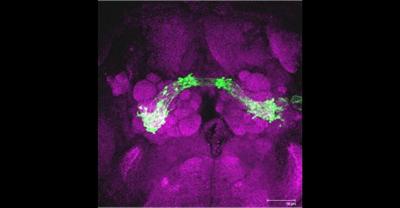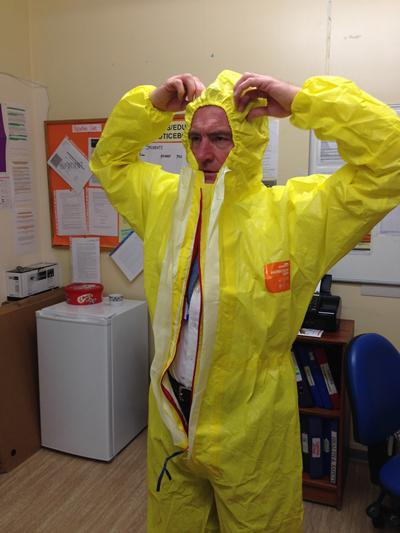Success for NAMRIP

The University's new, Network for Antimicrobial Resistance and Infection Prevention USRG has won £868,704.00 funding from EPSRC's 'Bridging the Gap' call.
The bid from Southampton's NAMRIP researchers was the highest value one funded by EPSRC.
The vision expressed by academics involved in the bid described how a network of academics, clinicians and researchers at the University of Southampton will bring together wide-ranging Engineering and clinical excellence at the university and beyond to become the first port-of-call for the UK Government concerning Anti-microbial resistance (AMR).
The group, using the USRG structure as part of the University of Southampton's powerful Interdisciplinary Research Strategy, will promote a strong and coherent academic research base that integrates Engineering and Physical Sciences (EPS) researchers into the established non-EPS AMR activities at Southampton, and further identify and nourish new synergies amongst the non-EPS AMR researchers.
They intend to develop and use the world's first Cognitive Computing resource to support network building in AMR (NAMRA-CC).
The governance of the USRG will provide a vigorous platform to prioritize the current AMR problems, and predict those for a 15-year future time window, including liaison with the other 'Bridging the Gaps' AMR Networks that have been funded. The new NAMRIP strategic research group will provide a knowledge base of the EPS skills that non-EPS researchers can call upon to address AMR problems in addition to providing a knowledge base of the clinical and non-EPS expertise and facilities that are available to test new solutions to AMR.
Such a network will enable laboratory solutions to be scaled up for impactful implementation in populations or healthcare settings, through expertise with industry and spin-outs; effective communication with policymakers and healthcare professionals; pre-emptive consideration of the legal and ethical realities that might otherwise hinder impact and pre-emptive consideration of the behavioural and habitual modes in populations and healthcare professionals that might also hinder impact. It will support researchers for the specific challenges of interdisciplinary research, seizing the opportunities as well as mitigating against disincentives.
Microbes continually evolve antibiotic-resistant strains despite the best efforts of biomedical scientists to combat them. This is taking us towards a future where routine operations and infections become high-risk, and where we cannot produce sufficient food globally (70% of antibiotics in the USA are used in animals for food production). We need a new strategy to combat Antimicrobial Resistance (AMR). This network will take world-leading Engineering and Physical Science (EPS) researchers and introduce them into a new Network for Antimicrobial Resistance and Infection Prevention (NAMRIP).
The group will hold a series of structured events, to share their expertise with clinicians from the NHS, with biomedical scientists, and researchers from Health and Life Sciences. These people can tell the EPS researchers about the AMR problems that need tackling, and how any solutions must be designed to work in a real-world environment for use by healthcare workers, farmers, industry and the workplace. To help in this, the Network also includes leading researchers from Social and Human Sciences who can explain how AMR solutions must fit in with human behaviour; with Geographers who are experts in how distribution of water supply, and livestock practices affect AMR; with experts in the Legal and Ethical issues in developing new solutions to AMR for use in the wider world; and with experts in Business who research how supply chain issues affect AMR.
Our EPS researchers have developed many world leading technologies, from the award-winning StarStream cleaning product, to surfaces that keep clean by mimicking shark skin. Such technologies were developed for other sectors (defence, nuclear etc.) and it is vital that such expertise be translated into the fight against AMR. Within NAMRIP, the inventors can access the experts who understand AMR, and access laboratories and clinics to test the step-changing solutions they collaboratively identify. In return, world-leading work by current AMR researchers can be enhanced through NAMRIP contacts in order to engineer solutions; shape them for ready adoption by healthcare workers and others; set out the behavioural, ethical and legal framework for their adoption; and develop the business solutions so that, rather than staying on the laboratory bench, step-changing technologies can be fashioned into products that are available across the UK, and beyond.
The first event, which will also launch the new USRG officially, will be a 'Start-up' conference for attendees to share expertise and identify possible collaborators. Keep an eye on our events calendar for news of this and other events and if you would like to become a member of NAMRIP email fmc@soton.ac.uk


Notes for editors
NAMRIP is funded by the University of Southampton and benefits hugely from £868,704.00 of funding from EPSRC's Network for Antimicrobial Action 'Bridging the Gap' call [EP/MO27260/1]. The MRC has also invested in NAMRIP, with one project already announced.